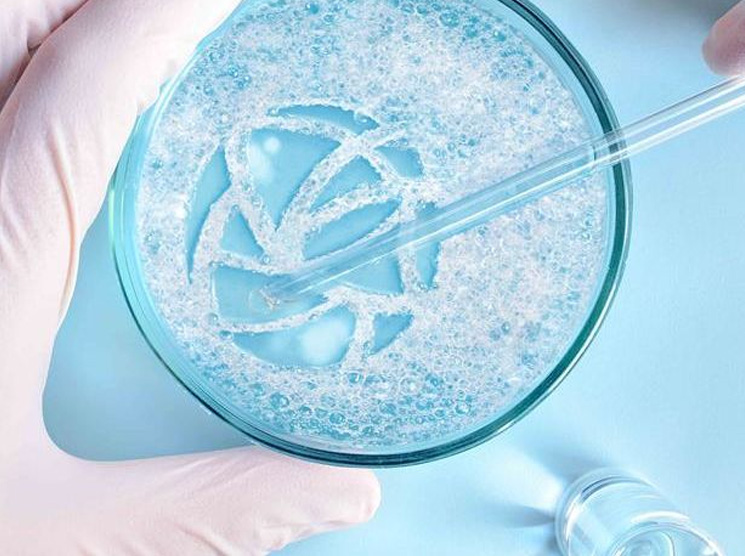There are many kinds of Defoamers and they are widely used. The process of “foam suppression” and “foam breaking” of the defoamer is: when the defoamer is added to the system, its molecules are randomly distributed on the surface of the liquid, inhibiting the formation of an elastic film, that is, terminating the generation of foam. When the system produces a large amount of foam, add defoamer, its molecules immediately spread on the surface of the foam, spread rapidly, form a very thin double film layer, further diffuse, penetrate, and invade in layers, thus replacing the thin wall of the original foam film. Due to its low surface tension, it flows to the liquid with high surface tension that produces foam, so that the defoamer molecules with low surface tension continue to diffuse and penetrate between the gas-liquid interface, making the film wall thinner rapidly, and the foam is also affected by the surrounding surface. The film layer with high tension pulls strongly, so that the stress around the foam is unbalanced, which leads to its “foam breaking”. The defoamer molecules that are insoluble in the system will re-enter the surface of another foam film, and so on, all the foam will be completely destroyed.
How to choose the correct Antifoam
The production and construction of coatings will produce bubbles to varying degrees. The generation of bubbles hinders the smooth progress of production and construction, and at the same time brings defects to the finished coating film. The correct selection of a suitable defoamer can ensure the normal progress of coating production and construction.
The task of the defoamer: destroy the liquid film on the surface of the bubble, prevent the formation of the bubble and promote the collapse of the bubble. The defoamer is used for large bubbles, and the microfoam needs to be used together with degassing and defoaming.
Defoamer features: The defoamer is insoluble in the medium, but can enter and disperse in the medium in the form of microdroplets. The most effective diameter of the defoamer microdroplets is equivalent to the thickness of the foam wall.
Defoamer composition: Defoamers for water-based architectural coatings are divided into non-silicon and silicon-containing types. Conventional Defoamers are composed of the following components:
Active substance: It acts as a foam-breaking and defoaming agent with low surface tension. Representatives include animal and vegetable oils, hydrophobic silica, higher alcohols, etc.
Diffusion agent: Wetting emulsifier to ensure that the defoaming micro-droplets spread and contact the bubble film and spread. There are non(octyl) phenol polyoxyethylene ether, soap salt and so on.
Carrier: It helps the active substance to combine with the foaming system, and is easy to disperse into the foaming system. Combining the two, it has low surface tension, helps to suppress foam, and can reduce costs.
Two conditions must be met for defoaming: penetration factor: E=γ1+γ12-γ3 > 0, to ensure that the defoamer penetrates into the foam wall; spreading factor S=γ1-v12-γ3 >0, to ensure that the defoamer droplets Diffusion spreading in foam media.
If you want to know more about Antifoam, please contact Yuncang: sales@yuncangchemical.com. leave your contact information
Post time: Jan-09-2023


